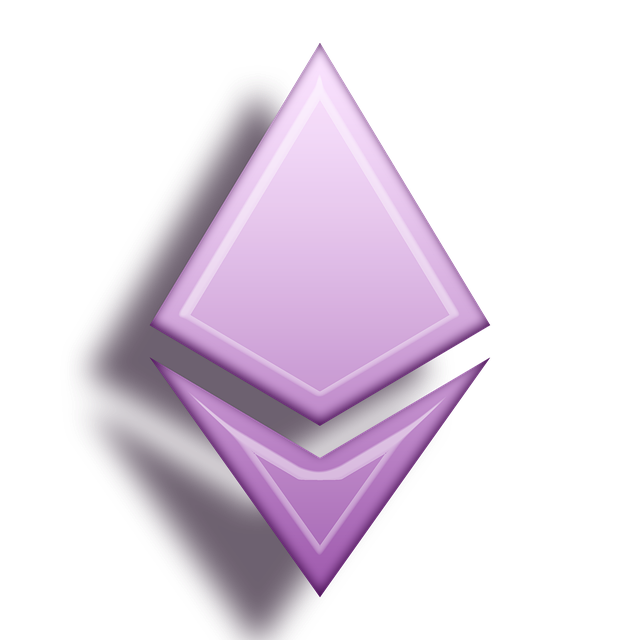What's the Main Difference Between Bitcoin and Ethereum: A Clear, Practical Guide
Author: Jameson Richman Expert
Published On: 2025-10-25
Prepared by Jameson Richman and our team of experts with over a decade of experience in cryptocurrency and digital asset analysis. Learn more about us.
What's the main difference between Bitcoin and Ethereum? At a high level, Bitcoin is primarily a decentralized digital currency and store of value, while Ethereum is a programmable blockchain designed to run decentralized applications (dApps) and smart contracts. This article explains their technical, economic, and practical differences in detail, offers real-world examples, compares risks and use cases, and shows how to buy, hold, and interact with each network. Whether you’re an investor, developer, or curious learner, this guide gives actionable insights and relevant resources to understand and decide which one fits your goals.

Quick comparison: Bitcoin vs Ethereum (at a glance)
- Primary purpose: Bitcoin — money and digital gold; Ethereum — programmable blockchain and dApp platform.
- Smart contracts: Bitcoin — limited scripting; Ethereum — Turing-complete smart contracts (Solidity, Vyper).
- Consensus: Bitcoin — Proof-of-Work (PoW); Ethereum — Proof-of-Stake (PoS) since The Merge.
- Max supply: Bitcoin — capped at 21 million; Ethereum — no fixed cap, but fee-burning (EIP-1559) adjusts issuance.
- Typical block time: Bitcoin — ~10 minutes; Ethereum — ~12 seconds (pre-Merge block cadence measured differently; transactions confirmed faster).
- Ecosystem: Bitcoin — payments, store-of-value, some layer-2s (Lightning); Ethereum — DeFi, NFTs, DAOs, tokens (ERC-20, ERC-721), many layer-2 solutions.
Core concept: currency versus platform
Bitcoin was introduced in 2009 by the pseudonymous Satoshi Nakamoto and its whitepaper framed it as “a peer-to-peer electronic cash system.” Over time, with limited on-chain programmability and a capped supply, many have come to view Bitcoin as “digital gold”: a decentralized store of value and hedge against fiat inflation.
Ethereum launched in 2015 by Vitalik Buterin and others with the explicit goal of creating a blockchain that runs decentralized applications via smart contracts. Instead of just moving value, Ethereum’s core proposition is programmability — letting developers build complex financial instruments, games, marketplaces, and governance systems on-chain.
Technical differences
Consensus mechanisms
Bitcoin uses Proof-of-Work (PoW) where miners solve cryptographic puzzles to produce blocks, securing the network at the cost of significant energy and specialized hardware. Ethereum transitioned from PoW to Proof-of-Stake (PoS) in 2022 with "The Merge." In PoS, validators stake ETH to propose and attest blocks; PoS reduces energy consumption and changes security and economic incentives.
Scripting and programmability
Bitcoin’s scripting language is intentionally limited and non-Turing-complete to reduce attack surface and complexity. It supports basic programmable features (multi-signature wallets, timelocks, simple covenants) but is not optimized for building complex applications.
Ethereum provides a Turing-complete virtual machine (the Ethereum Virtual Machine — EVM) and languages like Solidity and Vyper, enabling arbitrary computation and complex smart contracts. This is why DeFi, NFTs, and DAOs proliferate on Ethereum.
Tokens and standards
Ethereum popularized token standards like ERC-20 (fungible tokens) and ERC-721 (non-fungible tokens), making asset issuance and composability straightforward. Bitcoin can represent assets via overlay protocols but lacks the same native standards or composability.
Throughput and block times
Bitcoin’s block time is about 10 minutes and is optimized for security and censorship resistance. Ethereum’s shorter block timing and architecture allow faster transaction confirmations, though both networks rely on layer-2 scaling to handle mass consumer demand affordably.

Economic models and supply
Bitcoin supply schedule
Bitcoin has a fixed maximum supply of 21 million BTC. New BTC are released via mining rewards that halve approximately every four years (the “halving”). This predictable, capped issuance supports the narrative of scarcity.
Ethereum issuance and fee mechanics
Ethereum does not have a fixed hard cap. However, since EIP-1559 (implemented in 2021) a portion of transaction fees (the base fee) is burned, which can reduce net issuance. Post-Merge, staking rewards and burned fees interact to create a dynamic issuance model; during periods of high network usage, Ethereum can become deflationary (i.e., more ETH burned than issued).
Staking vs mining economics
On Ethereum, staking ETH to validate blocks yields rewards, and slashing penalizes misbehavior. Bitcoin miners invest in hardware and electricity to earn block rewards and transaction fees. These structural differences influence long-term supply expectations, security costs, and centralization risks.
Use cases and ecosystem differences
While both blockchains move value, their ecosystems diverge significantly:
- Bitcoin use cases: store-of-value, peer-to-peer payments, cross-border remittances (with L2s), on-chain scarcity experiments (e.g., Ordinals).
- Ethereum use cases: decentralized finance (lending, borrowing, DEXs), tokenized assets, NFTs and marketplaces, DAOs, prediction markets, identity and oracle-based apps.
For example, a treasury wanting capital preservation may prefer Bitcoin; a startup launching tokenized governance or complex financial primitives will likely choose Ethereum for its smart contract flexibility.
Security, decentralization, and censorship resistance
Both networks prioritize security and decentralization but achieve them differently.
- Bitcoin: security tied to mining hashpower. Historically robust and conservative in upgrades to preserve immutability. Favors stability and censorship resistance; changes are rare and deliberate.
- Ethereum: more agile with regular protocol upgrades and a vibrant developer community. Post-Merge, security depends on staked ETH and validator distribution. Ethereum’s rapid upgrade cadence enables innovation but introduces governance complexity.
Both systems face centralization risks: large mining pools on Bitcoin and large staking entities or liquid staking derivatives on Ethereum. Monitoring decentralization metrics (node counts, mining pool share, validator distribution) is essential.

Scalability and layer-2 solutions
Neither mainnet is currently suited for high-volume, low-cost consumer payments without layer-2 scaling:
- Bitcoin layer-2s: Lightning Network enables near-instant, low-fee payments off-chain, ideal for micropayments and merchant processing. Explore Lightning Network documentation on the official Bitcoin site.
- Ethereum layer-2s: rollups (Optimistic and ZK-rollups) and sidechains (e.g., Polygon) aggregate transactions off-chain and commit summaries on-chain, dramatically lowering fees and increasing throughput. Learn about the Ethereum roadmap at ethereum.org.
Transaction fees and user experience
Fees differ by network load and architecture:
- Bitcoin fees depend on mempool congestion and block space; transactions can be expensive during peak demand but are predictable for typical P2P transfers.
- Ethereum gas fees fluctuate with network demand and complexity of smart contract execution. EIP-1559 improved predictability by introducing a burning base fee, but complex DeFi transactions still cost more.
For frequent, low-value transfers, layer-2 solutions provide better UX. For a single long-term store-of-value transfer, Bitcoin’s on-chain security is often preferred.
Developer ecosystem and tooling
Ethereum has a vast developer ecosystem with frameworks like Hardhat and Truffle, tooling for testing, and extensive documentation for token standards. The EVM compatibility enables many chains (BSC, Polygon, Avalanche) to reuse Ethereum tooling. If you’re a developer, Ethereum offers more immediate opportunities for building complex dApps.
Bitcoin development is more conservative and specialized. Projects use languages and tools that interact with UTXO models (e.g., Bitcoin Script, miniscript, Rust, Python libraries). For programmable money with strong safety guarantees, Bitcoin’s environment is increasingly improving (e.g., Taproot, Ordinals, and BRC-20 experiments).

Investment considerations
When deciding whether to invest in Bitcoin, Ethereum, or both, consider:
- Purpose: Are you seeking long-term store-of-value, exposure to crypto infrastructure, or to leverage DeFi yields and NFTs?
- Risk tolerance: Ethereum’s utility makes its price more sensitive to dApp usage and network adoption; Bitcoin’s scarcity narrative may appeal to conservative crypto investors.
- Correlation and diversification: Historically, BTC and ETH are correlated but can diverge during network-specific events (e.g., upgrades, security incidents).
- Regulatory landscape: Securities classification, ETFs, and staking rules differ across jurisdictions; consult local guidance.
If you plan to trade, reputable exchanges provide liquidity and tools. Examples include Binance, MEXC, Bitget, and Bybit. Use reputable exchanges, enable strong security (2FA, withdrawal whitelist), and consider hardware wallets for long-term custody.
Real-world examples and scenarios
Scenario 1 — A treasury building an inflation hedge
A company with excess cash wants a hedge against fiat inflation. Bitcoin’s capped supply and widespread institutional adoption make it an attractive candidate. The treasury might allocate a portion to BTC for long-term store-of-value and keep the rest in cash or short-duration bonds.
Scenario 2 — Launching a tokenized service
An app wants programmatic token distribution, user staking, and in-app marketplace payments. Ethereum (or an EVM-compatible chain) is ideal because of mature token standards, wallets, and developer tooling.
Scenario 3 — Low-cost microtransactions
For streaming micropayments (e.g., tipping, pay-per-use API), Lightning Network on Bitcoin or a rollup on Ethereum will offer the best cost/latency trade-offs, depending on desired settlement and composability.
Regulatory and legal considerations
Regulation varies by country and use case. Custody, taxation, securities laws, and anti-money-laundering (AML) rules apply differently to trading, staking, token offerings, and DeFi activities.
For example, if you’re in Canada and want to understand the legal status of crypto exchanges and how to use licensed platforms safely, see this practical guide on crypto exchange legality in Canada: Is crypto exchange legal in Canada — rules, risks, and how to use licensed platforms.
Always consult local tax authorities or a tax professional for guidance on reporting crypto gains, and review exchange compliance information before depositing funds.

Environmental and energy considerations
Bitcoin’s PoW consensus has historically drawn criticism for its energy use. Advocates argue much mining uses renewable energy and contributes to grid stability in some regions. Ethereum’s shift to PoS reduced its energy consumption dramatically, a material change for sustainability-minded stakeholders.
How to buy, store, and use Bitcoin and Ethereum (practical steps)
- Choose an exchange: Use regulated, liquid exchanges such as Binance, MEXC, Bitget, or Bybit.
- Complete KYC: Most exchanges require identity verification for fiat onramps and withdrawals.
- Deposit fiat or crypto: Use bank transfers, cards, or crypto deposits.
- Use secure storage: For day-to-day trading, exchanges are fine; for long-term holding, move funds to a non-custodial wallet. Consider hardware wallets (Ledger, Trezor) for cold storage.
- Understand fees and confirmations: Learn network fee behavior for BTC and gas for ETH. For large transfers, wait for an appropriate number of confirmations before considering funds final.
Wallets and custody options
Non-custodial wallets (MetaMask for Ethereum, Electrum or Sparrow for Bitcoin) give direct control over private keys. Custodial wallets (exchanges) are convenient but require trust. Hardware wallets keep private keys offline and are recommended for significant holdings.
Real-time data, forecasts, and analysis
If you’re tracking price drivers or forecasts, consult reputable analysis and up-to-date reports. For weekly price drivers and in-depth BTC analysis, see this Bitcoin price forecast piece: Bitcoin price forecast — this week: key drivers. For deeper expert forecasts and future outlooks, these resources can be helpful:
- What price will Bitcoin hit in 2025 — Polymarket expert forecast
- Bitcoin price forecast (GitHub) — expert analysis and future outlook
For Ethereum-specific systems, signals, and applications, explore this guide: Comprehensive guide to ETHz signals and systems.

Risks and common pitfalls
- Security risks: Private key theft, phishing, and exchange hacks. Use hardware wallets and cautious operational security.
- Smart contract risk (Ethereum): Bugs in smart contracts can lead to losses. Audit critical contracts and prefer audited protocols when possible.
- Liquidity and slippage: Trading large orders on low-liquidity pairs can cause slippage; use limit orders or OTC desks for big trades.
- Regulatory risk: Sudden regulatory changes can affect access, exchanges, and tax obligations.
- Market volatility: Both BTC and ETH can experience large price swings. Position sizing and risk management are essential.
Future outlook: where each network is heading
Both blockchains continue to evolve:
- Bitcoin: Focus on maximizing decentralization and security (Taproot upgrade, Lightning Network growth, Ordinals/inscriptions experiments). Continued adoption by institutions and ETFs in some jurisdictions will shape demand.
- Ethereum: Ongoing scaling via rollups, sharding (planned in phases), and improvements to developer UX. Continued growth in DeFi, NFTs, and cross-chain interoperability are expected to drive utility and demand for ETH.
For practical investor-oriented forecasts and technical discussions, the previously mentioned analysis pages are useful starting points: weekly BTC drivers, in-depth BTC forecast, and expert 2025 BTC forecast.
Frequently asked questions (FAQ)
1. Is Bitcoin better than Ethereum?
“Better” depends on your objective. For long-term scarcity and simple secure transfers, Bitcoin is often favored. For building decentralized applications, tokenization, or DeFi, Ethereum is better suited. Many investors choose both for diversification.
2. Can Ethereum replace Bitcoin?
Not in the near term. They serve different use cases: Bitcoin prioritizes monetary scarcity and simple value transfer; Ethereum prioritizes programmability and composability. Both can coexist and complement each other in a diversified crypto ecosystem.
3. Which is more decentralized?
Both networks are highly decentralized relative to many centralized systems, but decentralization is multifaceted (validator/miner distribution, client diversity, ecosystem control). Bitcoin emphasizes conservative upgrades to maximize decentralization; Ethereum trades some conservatism for faster innovation. Monitor metrics like node counts and mining/validator concentration for up-to-date comparisons.
4. Which should I stake or mine?
You cannot mine ETH after The Merge; Ethereum uses staking. If you want passive staking income and accept lockups and slashing risk, staking ETH can be attractive. Bitcoin mining requires specialized hardware and is capital intensive; it’s not feasible for most individual investors.

Further reading and resources
- Bitcoin — Wikipedia (technical overview and history)
- Ethereum — Wikipedia (technical overview and ecosystem)
- Bitcoin.org — official community resource
- Ethereum.org — official Ethereum documentation
- Is crypto exchange legal in Canada — rules, risks, and how to use licensed platforms
- Bitcoin price forecast — weekly drivers
- What price will Bitcoin hit in 2025 — expert forecast
- Comprehensive guide to ETHz signals and systems
- Bitcoin price forecast (GitHub) — expert analysis
Conclusion — choosing between Bitcoin and Ethereum
To answer the core question one final time: what's the main difference between Bitcoin and Ethereum? Bitcoin is optimized as a decentralized monetary asset and store of value with limited programmability, while Ethereum is a programmable blockchain optimized for smart contracts and decentralized applications. The best choice depends on your needs: security and scarcity (Bitcoin) versus programmability and utility (Ethereum). Many users and institutions hold both to capture distinct value propositions.
Use secure custody, diversify appropriately, and keep learning. For trading access and liquidity, consider regulated, established exchanges such as Binance, MEXC, Bitget, or Bybit. For legal and market analysis, consult the detailed resources above and, where applicable, professional advisors.